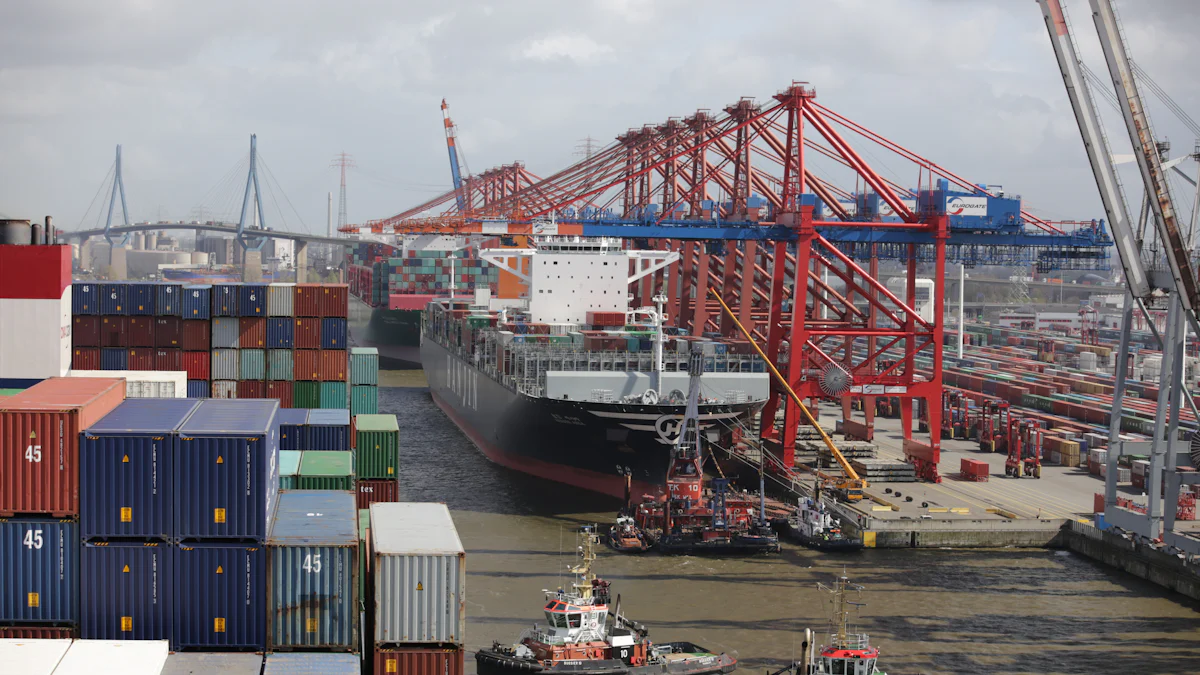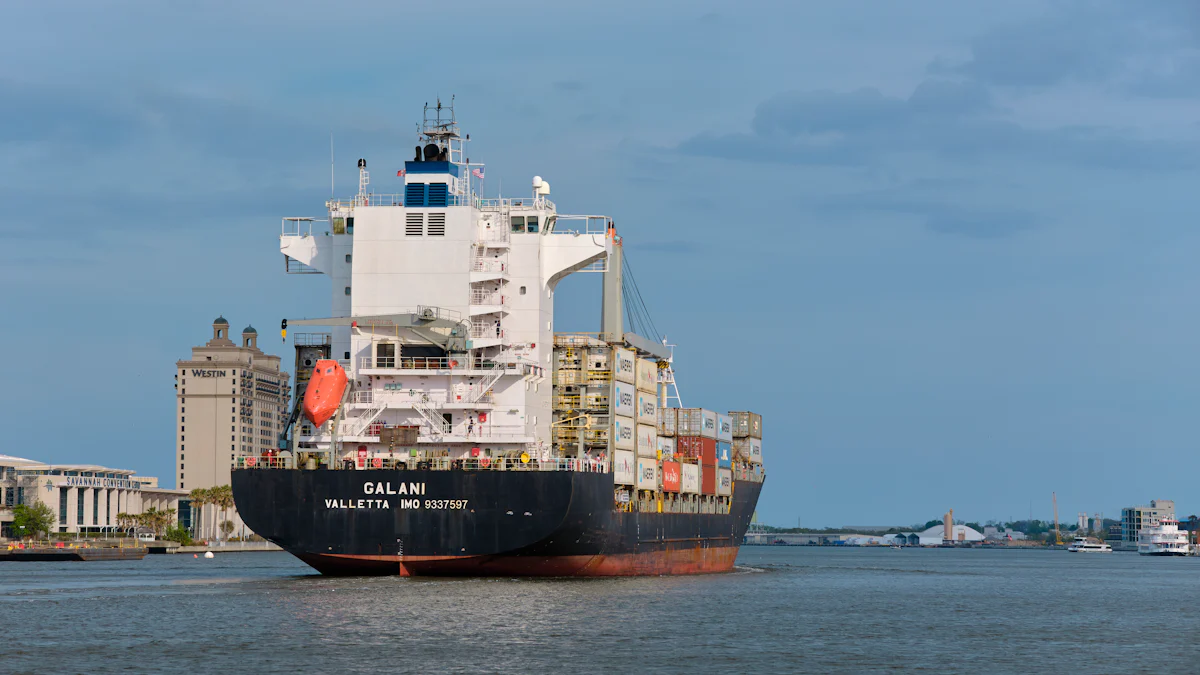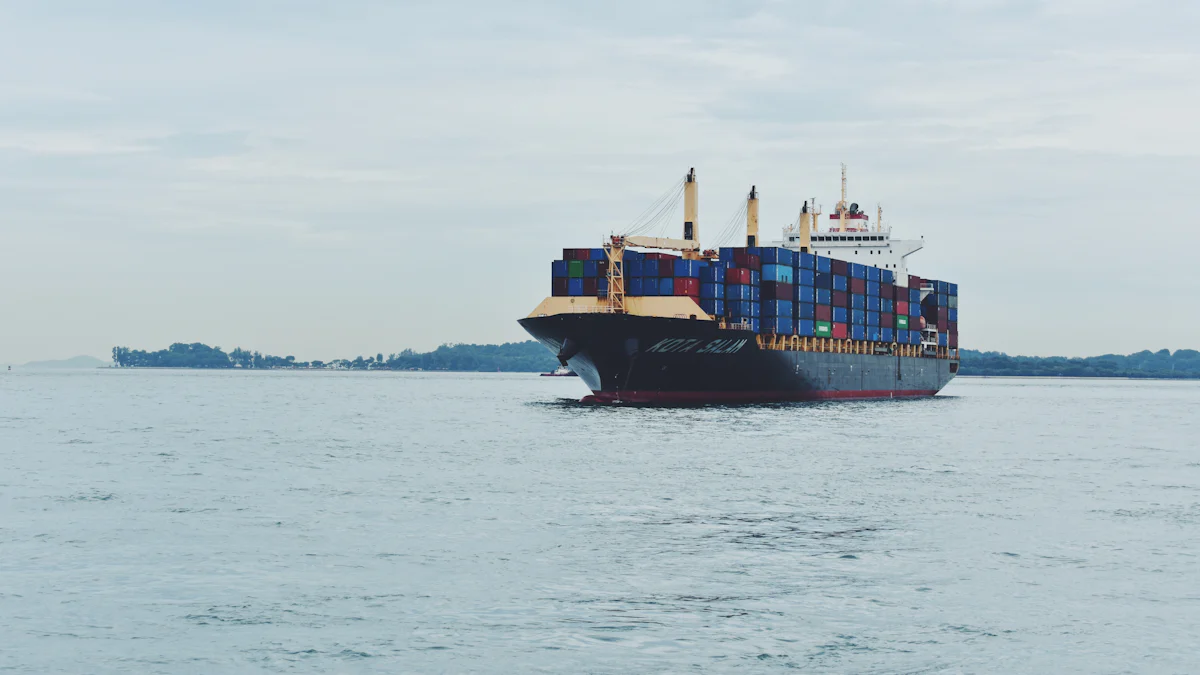How reliable is sea freight shipping?

Sea freight shipping has proven itself as one of the most dependable ways of transporting goods across the globe. With over 80% of the world’s cargo moved by sea, it plays a vital role in international trade. You can rely on sea freight for its ability to handle large shipments efficiently and cost-effectively. It’s especially ideal for businesses dealing with bulk cargo or heavy items. While challenges like weather or port delays may arise, advancements in technology and planning have made sea freight a remarkably reliable option for global shipping needs.
Key factors contributing to the reliability of sea freight shipping

Timeliness and scheduling in sea freight shipping
Sea freight offers dependable schedules that help you plan your shipments with confidence. Shipping companies operate on fixed timetables, ensuring regular departures and arrivals. While transit times may be longer compared to air freight, sea freight compensates with consistency. For example, container ships follow established routes, reducing the chances of unexpected delays.
Weather can occasionally disrupt schedules, but modern forecasting tools allow shipping companies to adjust routes and minimize disruptions. You can also rely on advanced tracking systems to monitor your cargo in real time, giving you peace of mind about its location and estimated arrival.
Safety and security measures in sea freight
Sea freight prioritizes the safety of your goods. Shipping crews undergo rigorous training to handle various types of cargo, including hazardous materials. Containers are designed to protect items from damage during transit, ensuring that your shipment arrives in excellent condition.
Ports and shipping companies implement strict security protocols to prevent theft or tampering. For instance, many ports use surveillance systems, access controls, and cargo inspections to safeguard shipments. If you’re shipping valuable or sensitive items, you can also opt for additional security measures like GPS tracking or tamper-proof seals.
Cost-effectiveness and scalability of sea freight shipping
Sea freight stands out as one of the most cost-effective options for transporting goods, especially for large or heavy shipments. Unlike air freight, which often incurs higher costs, sea freight allows you to move bulk cargo at a fraction of the price. This makes it an ideal choice for businesses looking to optimize their shipping budgets.
The scalability of sea freight is another major advantage. Whether you’re shipping a small container or an entire vessel’s worth of goods, sea freight can accommodate your needs. This flexibility ensures that you only pay for the space you use, further enhancing its cost-efficiency.
Additionally, sea freight offers environmental benefits. Ships produce fewer carbon emissions per ton of cargo compared to planes, making it a more sustainable choice for businesses aiming to reduce their environmental impact.
Challenges and risks in sea freight shipping
Weather-related disruptions and their impact
Weather can be unpredictable, and it often poses challenges for sea freight. Storms, strong winds, and rough seas can delay vessels or force them to reroute. These disruptions not only extend transit times but also create uncertainty for your delivery schedules. For instance, ports located in regions prone to hurricanes or typhoons may temporarily shut down, halting operations entirely.
Climate-related events, such as rising sea levels and flooding, also affect port infrastructure. Damaged facilities can lead to longer loading and unloading times, further delaying shipments. While modern forecasting tools help shipping companies anticipate and mitigate some of these issues, weather remains a factor you should consider when planning your shipments.
Port congestion and delays in sea freight
Port congestion is one of the most common challenges in sea freight. When too many vessels arrive at a port simultaneously, it creates a bottleneck. Ships may have to wait days or even weeks before they can dock and unload their cargo. This issue became particularly evident during the pandemic, when labor shortages and mandatory quarantines slowed down port operations worldwide.
Congestion doesn’t just delay your shipments—it also increases costs. Storage fees for containers stuck at ports can add up quickly. Additionally, some vessels may skip congested ports altogether, forcing your cargo to be rerouted to another location. This adds complexity to your supply chain and makes it harder to stick to tight schedules.
Customs and regulatory challenges in sea freight shipping
Navigating customs and regulatory requirements can be tricky in sea freight shipping. Each country has its own set of rules, and failing to comply can result in significant delays. Missing or incorrect documentation is one of the most common reasons shipments get held up at customs. You might also face additional inspections, which can slow down the process even further.
Regulations around hazardous materials, food products, and other specialized goods add another layer of complexity. If your shipment doesn’t meet the necessary standards, it could be rejected or confiscated. Staying informed about the latest regulations and ensuring proper documentation can help you avoid these pitfalls.
Pro Tip: Partnering with an experienced freight forwarder can simplify customs clearance and reduce the risk of delays.
How sea freight shipping compares to other shipping methods
Sea freight vs. air freight: Speed, cost, and capacity
When deciding between sea freight and air freight, the key factors to consider are speed, cost, and capacity. Air freight is undeniably faster. If you need goods delivered urgently, air freight can transport them in a matter of days. However, this speed comes at a high price. Air freight is significantly more expensive, making it less practical for businesses shipping large volumes or heavy items.
Sea freight, on the other hand, offers unmatched cost-effectiveness. It allows you to ship bulk goods at a fraction of the cost of air freight. This makes it an ideal choice for businesses looking to optimize their budgets. Additionally, sea freight provides greater capacity. Cargo ships can handle massive shipments, including oversized or heavy items that planes cannot accommodate. While transit times are longer, the reliability and affordability of sea freight make it a preferred option for non-urgent shipments.
Quick Tip: If your priority is cost and capacity over speed, sea freight is the way to go. For time-sensitive shipments, air freight might be worth the extra expense.
Sea freight vs. rail and road freight: International shipping advantages
Rail and road freight are excellent options for domestic or regional shipping. Rail freight is particularly cost-efficient for long-distance hauls within a continent, while road freight offers flexibility for last-mile delivery. However, when it comes to international shipping, sea freight holds a distinct advantage.
Sea freight excels in handling global trade. It connects continents and provides a seamless solution for shipping goods across oceans. Unlike rail and road freight, which are limited by land routes, sea freight can transport goods to virtually any country with a port. It also remains more economical for large shipments over long distances. For example, shipping a container of goods from Asia to Europe via sea freight is far more affordable than relying on rail or road transport.
Did You Know? Sea freight accounts for over 80% of global trade, highlighting its importance in international shipping.
Sea freight vs. multimodal shipping: Combining methods for efficiency
Multimodal shipping combines two or more transportation methods, such as sea, rail, and road freight, to create an efficient supply chain. While sea freight alone is cost-effective and reliable, multimodal shipping offers added flexibility. For instance, you can use sea freight for the bulk of the journey and road freight for last-mile delivery.
This approach works well when shipping to inland destinations far from ports. By integrating sea freight with other modes of transport, you can reduce costs while ensuring timely delivery. However, multimodal shipping requires careful coordination. Partnering with experienced logistics providers can help you streamline the process and avoid delays.
Pro Tip: Consider multimodal shipping if your destination is far from a port. It combines the affordability of sea freight with the flexibility of other transport modes.
Technological advancements improving sea freight reliability

Real-time tracking and monitoring in sea freight
Technology has transformed how you monitor your shipments. Real-time tracking tools now let you follow your cargo from the moment it leaves the port to its final destination. These systems use GPS and IoT (Internet of Things) devices to provide constant updates on your shipment's location, condition, and estimated arrival time. You no longer have to wonder where your goods are or when they’ll arrive.
This level of transparency helps you plan better. For example, if there’s a delay due to weather or port congestion, you’ll know immediately and can adjust your logistics accordingly. Many shipping companies also offer mobile apps or online platforms where you can access this information with just a few clicks. Real-time tracking not only gives you peace of mind but also strengthens your ability to meet customer expectations.
Did You Know? The rise of online freight marketplaces has made it easier to access these tracking tools, improving the overall dependability of sea freight.
Automation and AI in sea freight logistics
Automation and artificial intelligence (AI) are revolutionizing sea freight logistics. Automated systems now handle tasks like cargo loading, route optimization, and even customs documentation. This reduces human error and speeds up processes, ensuring your shipments move smoothly through the supply chain.
AI plays a key role in predicting potential disruptions. For instance, machine learning algorithms analyze historical data and current conditions to forecast delays caused by weather or port congestion. With this information, shipping companies can reroute vessels or adjust schedules to avoid problems. You benefit from faster, more reliable deliveries.
Ports are also adopting automation. Robotic cranes and automated guided vehicles (AGVs) streamline loading and unloading, cutting down on wait times. These advancements not only improve efficiency but also make sea freight a more dependable option for your business.
Quick Fact: The maritime industry is undergoing a technological revolution, with automation and AI at the forefront of these changes.
Sustainable practices in sea freight shipping
Sustainability is becoming a priority in sea freight. Shipping companies are adopting eco-friendly practices to reduce their environmental impact. For example, many vessels now use cleaner fuels like liquefied natural gas (LNG) instead of traditional diesel. This change lowers greenhouse gas emissions and makes sea freight a greener choice for transporting goods.
Energy-efficient technologies are also making waves. Modern ships feature advanced hull designs and energy-saving engines that consume less fuel. Some companies are even exploring renewable energy sources, such as wind-assisted propulsion systems, to power their vessels.
By choosing sustainable shipping options, you not only contribute to environmental conservation but also align your business with global sustainability goals. Customers increasingly value eco-conscious practices, so this shift can enhance your brand’s reputation.
Pro Tip: Look for shipping providers that prioritize sustainability. It’s a win-win for your business and the planet.
Tips for businesses to ensure reliable sea freight shipping
Partnering with experienced freight forwarders
Choosing the right freight forwarder can make or break your sea freight experience. An experienced freight forwarder simplifies the entire process, from booking cargo space to handling customs clearance. They understand the complexities of international shipping and can guide you through potential challenges. For instance, they’ll help you navigate port regulations, select the best routes, and ensure your goods are handled properly.
A reliable freight forwarder also has established relationships with shipping companies. These connections can secure better rates and prioritize your shipments during busy periods. When selecting a partner, look for one with a proven track record, positive reviews, and expertise in your industry. This partnership ensures your sea freight operations run smoothly and efficiently.
Pro Tip: Ask your freight forwarder about their contingency plans for delays or disruptions. A proactive approach can save you time and money.
Planning and scheduling shipments effectively
Proper planning is essential for reliable sea freight shipping. Start by understanding your shipping timeline. Sea freight typically takes longer than other methods, so plan your shipments well in advance. This helps you avoid last-minute rushes and unexpected costs.
Create a detailed schedule that includes key milestones, such as booking cargo space, preparing documentation, and estimated delivery dates. Share this timeline with all stakeholders to keep everyone aligned. Additionally, consider seasonal factors like peak shipping periods or weather conditions that might affect transit times.
Advanced planning also allows you to choose the most cost-effective options. For example, you can decide between full container load (FCL) and less than container load (LCL) based on your shipment size. FCL is ideal for larger shipments, while LCL works for smaller loads. By planning ahead, you can optimize costs and ensure timely delivery.
Quick Tip: Use tracking tools to monitor your shipment’s progress and adjust your schedule if needed.
Ensuring proper documentation and compliance in sea freight
Accurate documentation is critical for smooth sea freight shipping. Missing or incorrect paperwork can lead to delays, fines, or even confiscation of your goods. Common documents include the bill of lading, commercial invoice, packing list, and certificates of origin. Double-check these documents to ensure they meet the requirements of both the origin and destination countries.
Compliance with customs regulations is equally important. Each country has unique rules for importing and exporting goods. Familiarize yourself with these regulations to avoid complications. For instance, certain items may require special permits or inspections. If you’re shipping hazardous materials, ensure they meet international safety standards.
Partnering with a knowledgeable freight forwarder can simplify this process. They’ll help you prepare the necessary documentation and ensure compliance with all regulations. This reduces the risk of delays and keeps your shipments on track.
Did You Know? Customs delays are one of the most common issues in sea freight. Proper documentation can significantly reduce this risk.
Sea freight shipping remains a dependable and cost-effective solution for businesses, especially when transporting goods in bulk or managing international trade. It offers unmatched scalability and affordability, making it ideal for optimizing shipping expenses. While challenges like weather disruptions and port delays can arise, you can overcome them with proper planning, advanced technology, and partnerships with experienced freight forwarders. By evaluating your specific needs and comparing sea freight with other methods, you can make informed decisions that align with your business goals and ensure smooth operations.
See Also
Discovering Innovations in Sea Freight Logistics for 2024
An In-Depth Look at LTL Freight's Future Trends
Understanding Current Trends in Logistics Risk Management
